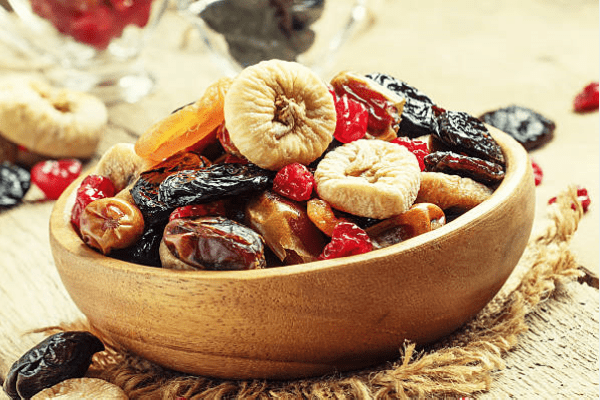Digestive system >>>> Causes and treatment of constipation
Causes and treatment of constipation.

The problem of constipation is relevant throughout the entire period of human existence. In our time, constipation is very common: according to research, it suffers from 10 to 50% of the population of developed countries. Constipation means a systematic delay in the process of bowel movement for more than two days, characterized by difficulty in defecation and a feeling of insufficient bowel movement, as well as increased feces density.
Constipation can be one of the symptoms of a number of diseases and pathological conditions, and also develops as an independent disease, is acute or chronic. The development of constipation is based on intestinal dyskinesia, hypotonic or spastic (in other words, its motor function is impaired).
The motor activity of the large intestine depends on the composition of the food consumed. Carbohydrates and fats stimulate intestinal motor function, while proteins tend to inhibit colon motor activity. The food mass is accumulated in contact with intestinal bacteria. Bifidobacteria and lactobacilli, as well as Enterococcus faecalis, break down cellulose and hemicellulose, which are contained in the peel of fruits and vegetables, the shell of cereals, to fatty acids, for example, lactic, propionic, etc., gases: methane, hydrogen, carbon dioxide, which stimulate intestinal motility.
Fiber, which is not digested, retains water in the intestine, thereby increasing the volume of intestinal contents, which, together with the increased bacterial mass, irritates the receptors in the colon. Proteins are broken down by bacteria (Bacteroides, Proteus, Clostridium, and Escherichia coll), forming ammonium, phenols, mercaptopurines and purines. Normally, proteolytic and saccharolytic bacteria convert proteins and carbohydrates into their end products. But the altered composition of the intestinal microflora will lead to metabolic disorders and the movement of food masses through the large intestine.
One of the reasons for the violation of intestinal motility is a decrease in the sensitivity of the receptors in the wall of the large intestine. With constipation, the transmission of a nerve impulse is disrupted, the rectum begins to increase in volume, swelling, which leads to atony of the intestinal wall. Therefore, the urge appears only with a large accumulation of feces in it.
There is a conditional classification of constipation.
By the stage of the course:
- compensated
- subcompensated
- decompensated
By the mechanism of formation:
- evacuation violations
- motor disorders
By intensity:
- chronic
- acute
At the first stage of the course, measures are taken to restore the urge to defecate. On the second - with the unsuccessful results of the use of laxatives, the nutritional system changes. The third stage requires surgery. Most often, chronic constipation has to be treated.
Chronic constipation causes :
- insufficient amount of vegetable fiber in food
- lack of exercise
- neurogenic disorders
- toxic (mercury, thallium, lead, nicotine, etc.)
- endocrine disorders (Diabetes mellitus, Addison's disease, Myxedema, Parkinson's disease, Anorexia, Neurosis, Hypothyroidism, etc.)
- diseases of the digestive system (structural changes in the intestinal wall, tumors, intestinal dysbiosis, peptic ulcer disease, colon diverticulosis, cholelithiasis, pathology of the anorectal region, biliary diseases)
- medication result
- irritable bowel syndrome (an independent disease with a history of constipation)
Treating chronic constipation.
Correct medical tactics implies an analysis of the disease and an examination that excludes organic changes (requiring surgical correction). Further, the main mechanism of development and maintenance of constipation is specified.
Treatment approaches for constipation:
- development and adherence to a diet
- calculation of the drinking regime (from one and a half to two liters per day)
- moderate physical activity (without lifting weights)
- selection of drugs for the regulation of colon motility (anthraglycosides: rhubarb, buckthorn; herbal preparations: senna leaves, caraway seeds, toaster fruits, black elderberries, chamomile flowers, dill seeds, immortelle flowers, mint leaves, valerian root, buckthorn bark, etc. .)
- osmotic laxatives (magnesium sulfate, Karlovy Vary salt, Mannitol, Forlax, Sorbitol, Lactulose)
- agents that increase the volume of intestinal contents
Many drugs tend to inhibit the motor activity of the colon. And with the simultaneous administration of several drugs, constipation can be increased and maintained.
Medicines that reduce motor activity and thereby increase the tendency to constipation:
- narcotic analgesics;
- antispasmodics (anticholinergic drugs);
- antacids containing aluminum hydroxide or calcium carbonate;
- urological drugs (for the treatment of prostate diseases);
- diuretics;
- antibiotics (cephalosporins, gyrase inhibitors);
- muscle relaxants;
- anti-tuberculosis drugs;
- antifungal agents;
- antidepressants;
- non-steroidal anti-inflammatory drugs;
- drugs used to treat glaucoma;
- antihypertensive drugs (calcium antagonists, b-blockers, angiotensin-converting enzyme inhibitors, angiotensin II receptor blockers, centrally acting antiadrenergic drugs);
- preparations containing iron salts;
- gestagens;
- drugs to reduce lipid metabolism (ion exchange);
- antipsychotics;
- tranquilizers;
- antiepileptic drugs (anticonvulsants).

Read

Read



























